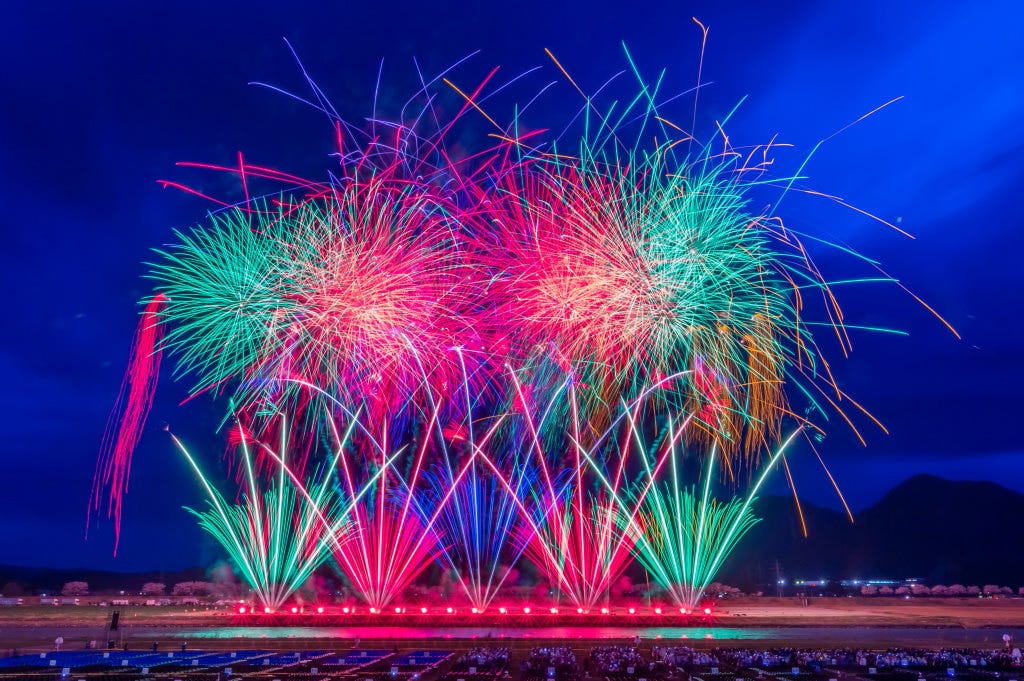 EOS 5Ds/ EF11-24mm f/4L USM/ FL: 15mm/ Manual exposure (f/22, 34 sec)/ ISO 50/ WB: 3,150K
EOS 5Ds/ EF11-24mm f/4L USM/ FL: 15mm/ Manual exposure (f/22, 34 sec)/ ISO 50/ WB: 3,150KLocation: Omagari National Japanese Fireworks Competition (2016)
Basics: Hold down your shutter until the bursts have opened
Points to note when photographing a barrage of fireworks
- While shooting, check through the Live View the height at which the fireworks burst as well as the size of the fireworks effect.
- In the case of a wide barrage of fireworks, check the launch width.
- Mount your camera on a tripod, and use a remote switch to take shots.
- Because the fireworks are launched over a wide area, shoot horizontally.
× Fireworks tend to produce smoke, so avoid taking shots when the visibility of the fireworks is affected.
When to release the shutter?
You will need to use. As a guide, set the aperture to around f/22 initially, and set the shutter speed to around 2 seconds if the fireworks are shot up all at once, or around 30 seconds if many fireworks are shot up in succession, and then release the shutter.
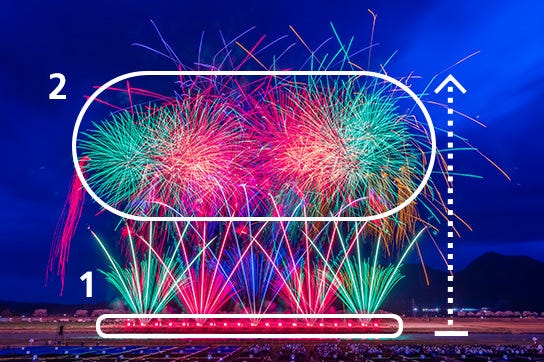 1. Press the remote switch when the show lights up.
1. Press the remote switch when the show lights up.
2. Release the remote switch when the fireworks take shape.
Be careful not to overexpose the shot
A barrage of fireworks is a method of launching that involves launching a combination of many large and small fireworks at once. To avoid overexposing the shot, narrow the aperture to f/22 and set a low ISO speed. If the fireworks are launched all at once, set the shutter speed to 1 to 2 seconds, or if launched in succession, set a longer timeframe. Use a neutral density (ND) filter, reflector or other means to adjust the amount of exposure.
Now that we have gotten the basic concepts out of the way, let’s look at some details that will help you take even better photos of multiple fireworks!
1. The shutter timing should be changed according to how and where the fireworks are launched
There are a number of ways to launch a barrage of fireworks. If fireworks are launched from two locations, close the shutter after the second set of firework effects have completely faded away. If there is a gap in the timing of the launch of large and small fireworks, while watching the balance, open the shutter until the fireworks that you want in the frame are launched into the air. In the case of fireworks that are launched at an oblique angle, be careful not to overexpose the image. If multiple fireworks are launched at once, close the shutter when the fireworks have taken shape.
When fireworks are launched from two locations
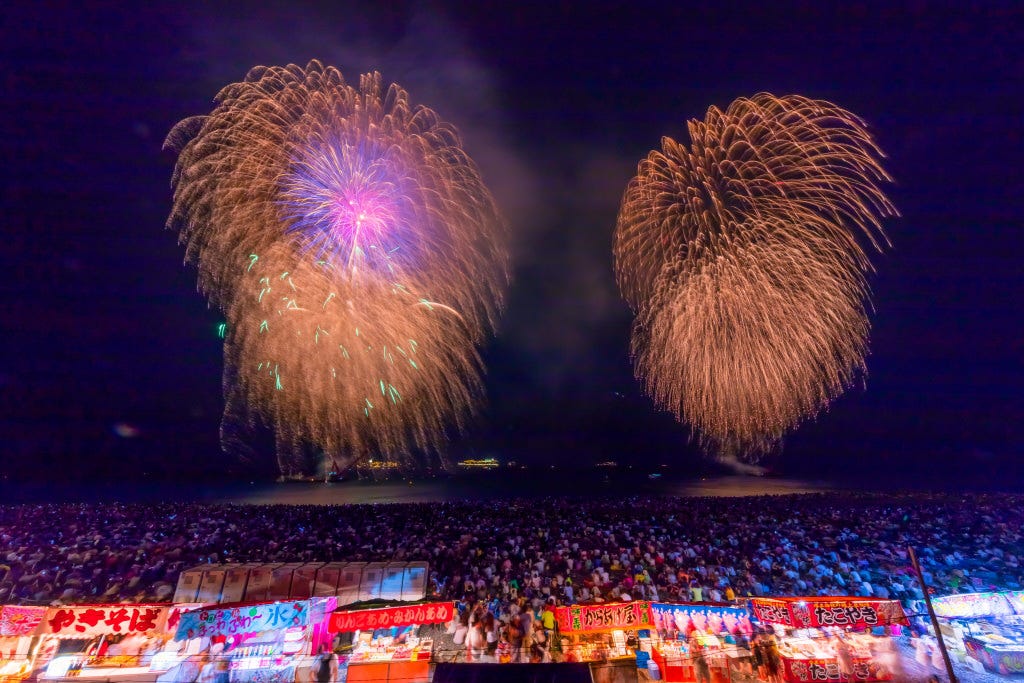 EOS 5Ds/ EF11-24mm f/4L USM/ FL: 11mm/ Manual exposure (f/22, 13 sec)/ ISO 50/ WB: Auto
EOS 5Ds/ EF11-24mm f/4L USM/ FL: 11mm/ Manual exposure (f/22, 13 sec)/ ISO 50/ WB: Auto
When there is a time gap between the launching of large and small fireworks
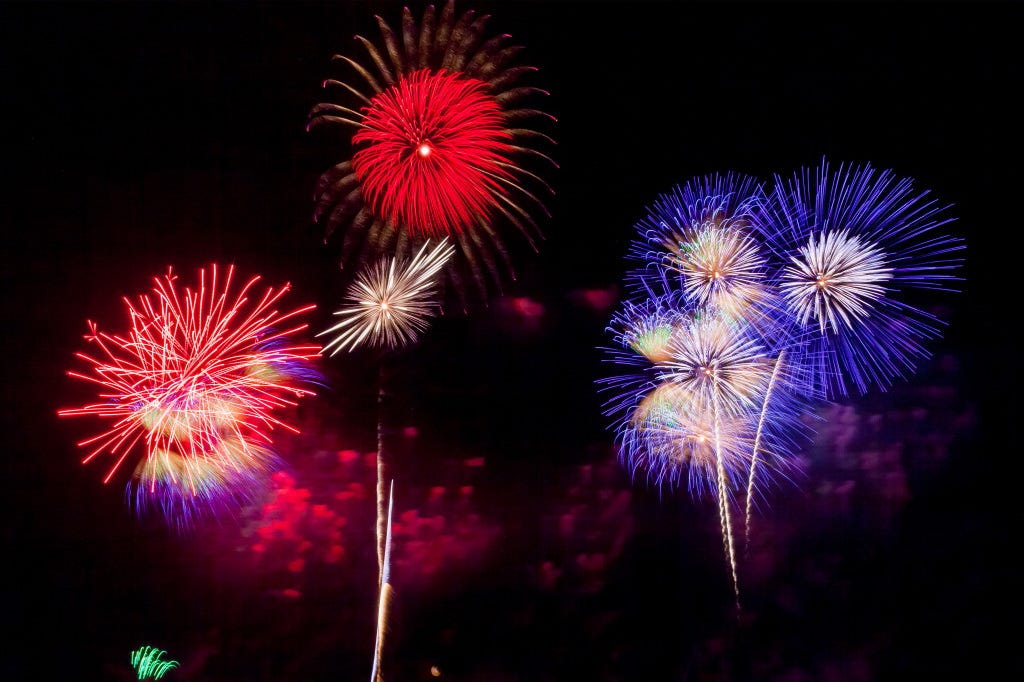 EOS 5D Mark II/ EF24-105mm f/4L IS USM/ FL: 24mm/ Manual exposure (f/22, 4 sec)/ ISO 50/ WB: Auto
EOS 5D Mark II/ EF24-105mm f/4L IS USM/ FL: 24mm/ Manual exposure (f/22, 4 sec)/ ISO 50/ WB: Auto
When fireworks are launched at an oblique angle
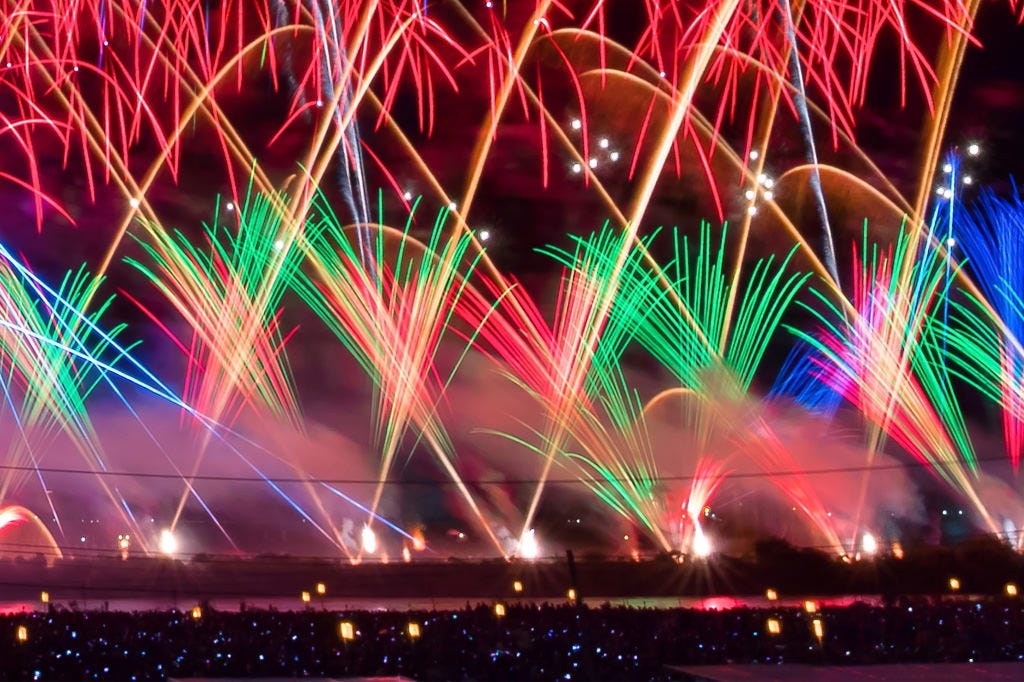
When multiple fireworks are launched at once
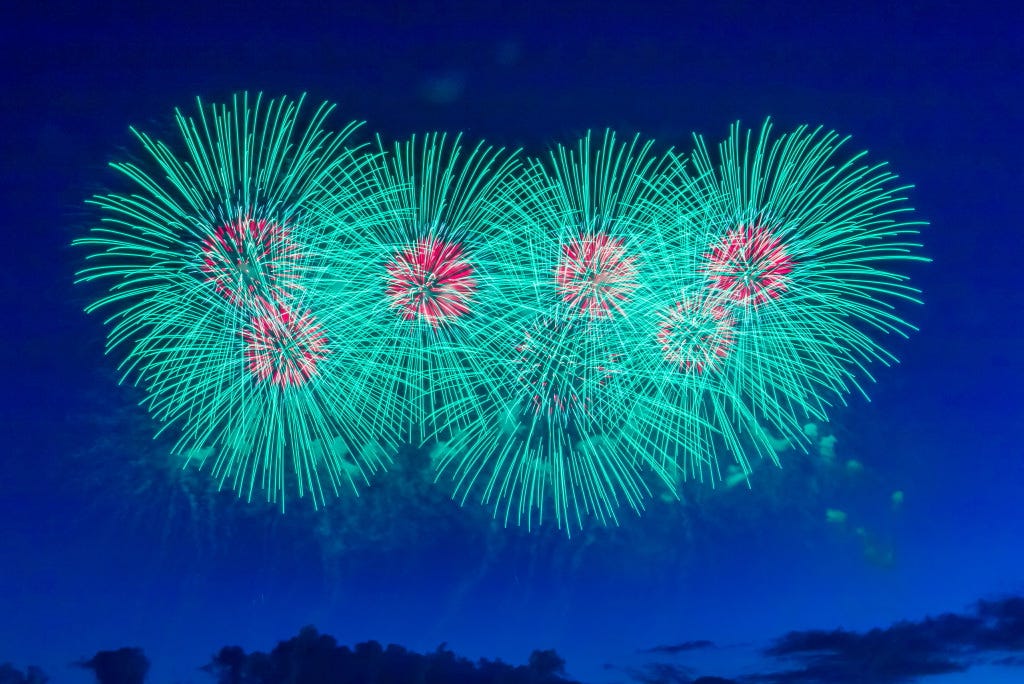 EOS 5DS/ EF11-24mm f/4L USM/ FL: 15mm/ Manual exposure (f/22, 1.4 sec)/ ISO 50/ WB: Auto
EOS 5DS/ EF11-24mm f/4L USM/ FL: 15mm/ Manual exposure (f/22, 1.4 sec)/ ISO 50/ WB: Auto
2. The launch sequence and brightness of the individual fireworks should be considered when shooting
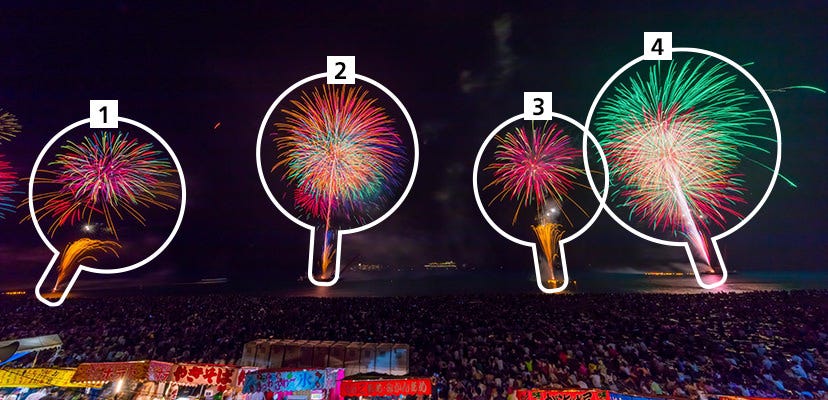 When fireworks were launched from four locations, I took a shot aiming to capture the fireworks as they were launched in order starting from the left. In this case, though, the firework on the far right is brighter than the other three, so you need to be careful to avoid blowout in the image. When the four fireworks have been launched and taken shape, release the remote switch.
When fireworks were launched from four locations, I took a shot aiming to capture the fireworks as they were launched in order starting from the left. In this case, though, the firework on the far right is brighter than the other three, so you need to be careful to avoid blowout in the image. When the four fireworks have been launched and taken shape, release the remote switch.
3. How to capture only the fireworks you want
If you capture all of the fireworks that are launched in succession, they will appear pure white in the image, with the shape of the firework effects unrecognisable. To avoid placing unwanted fireworks in the frame, use a screen like the one shown below (or a black cloth) to block out fireworks as needed.
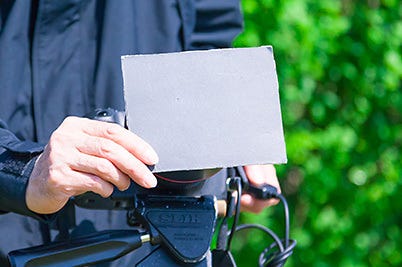
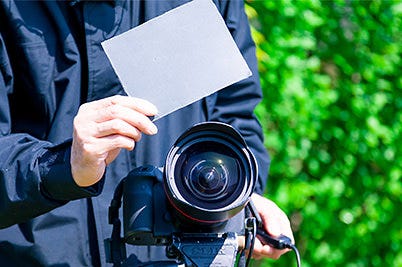
A reflector board that I created myself. The side facing the camera is black. Cover the lens with this when you want to block out unwanted fireworks. This is essentially multiple exposure shooting.





